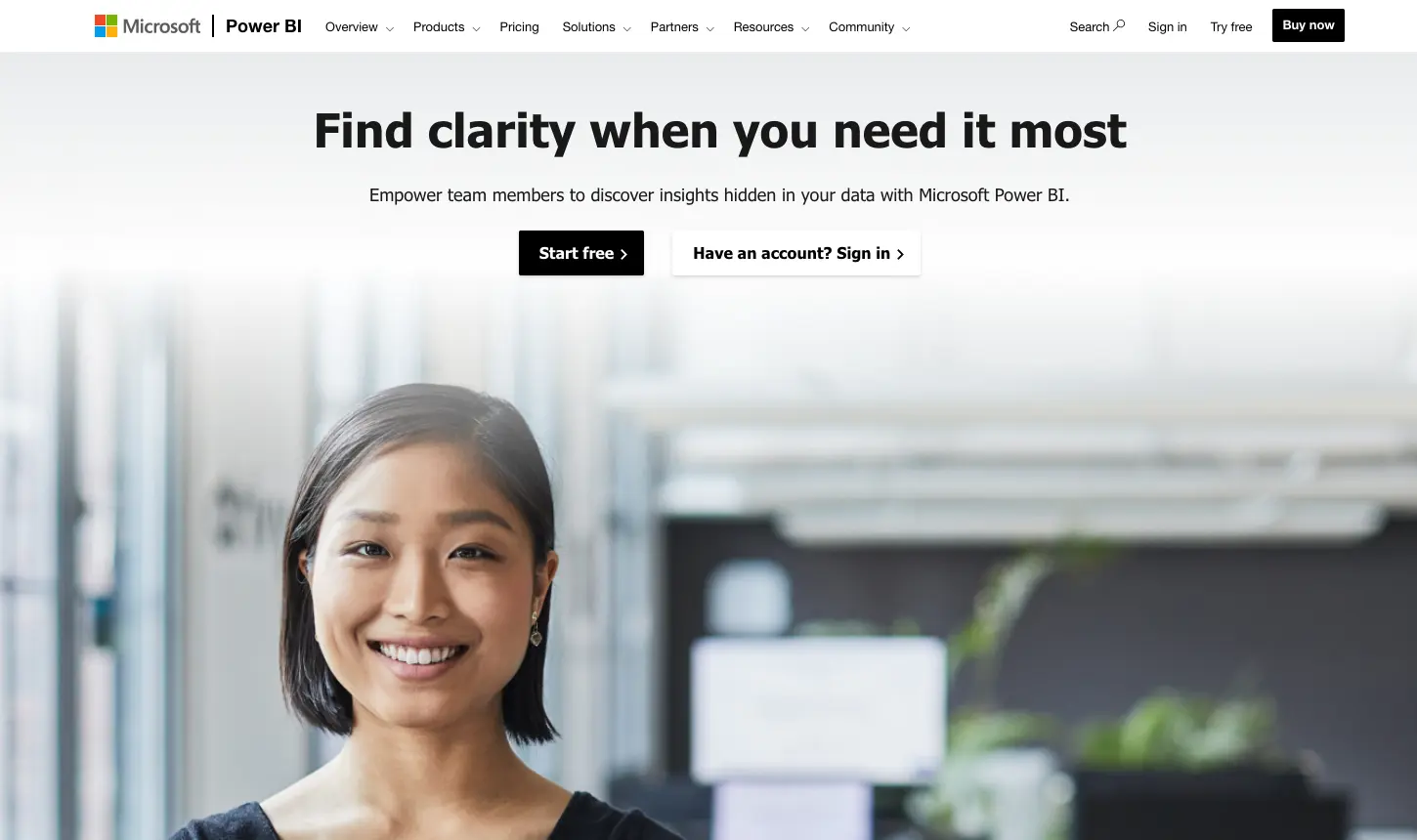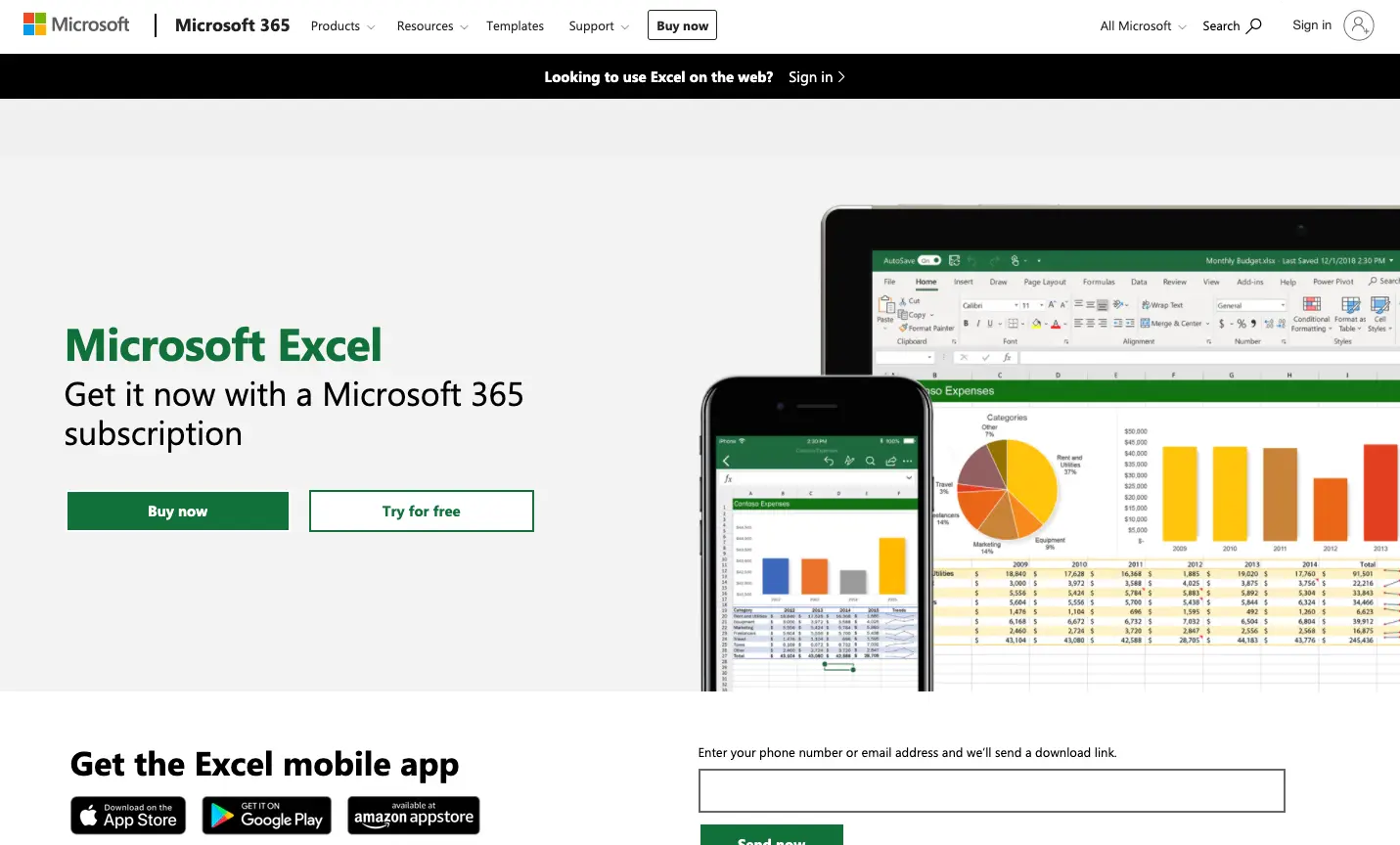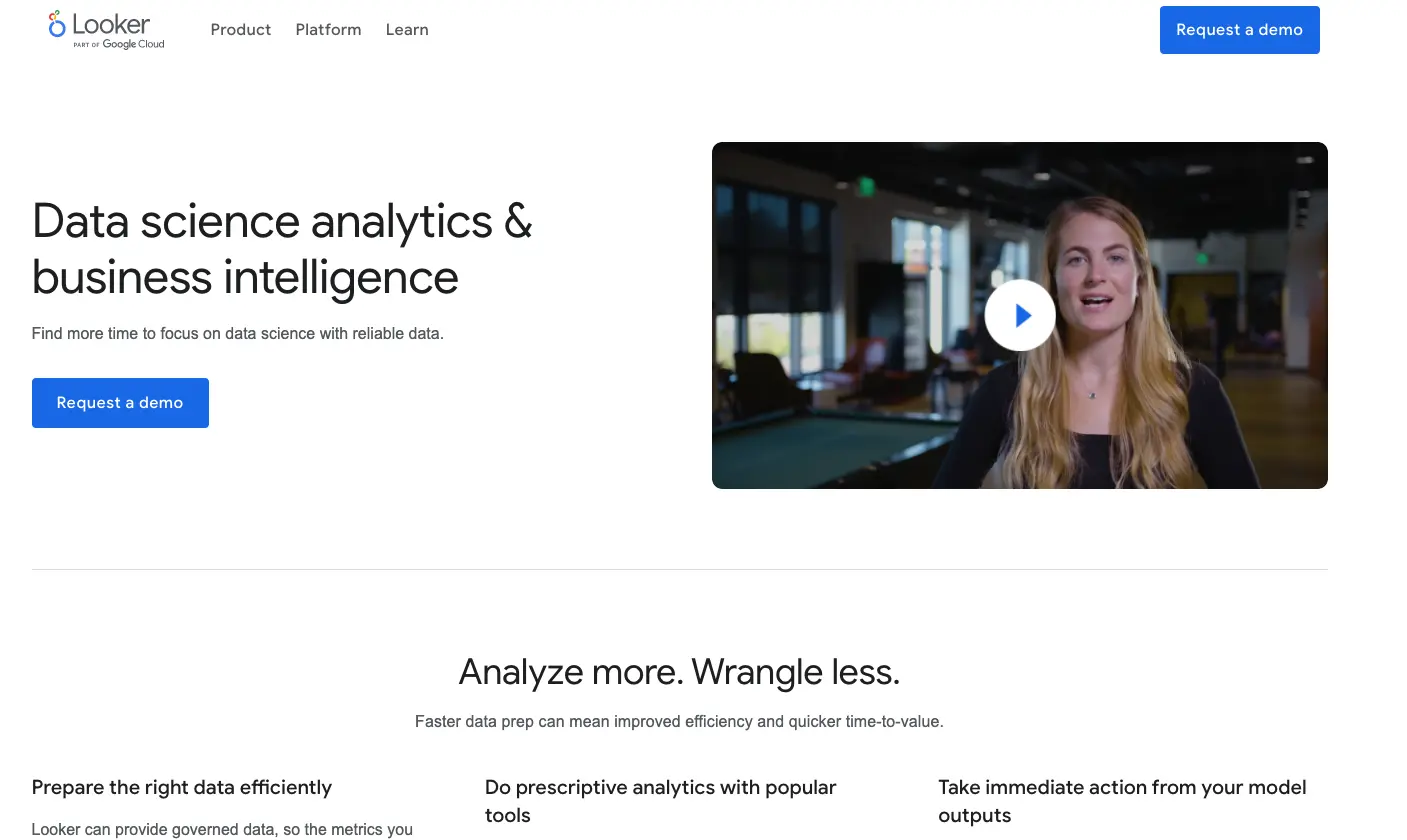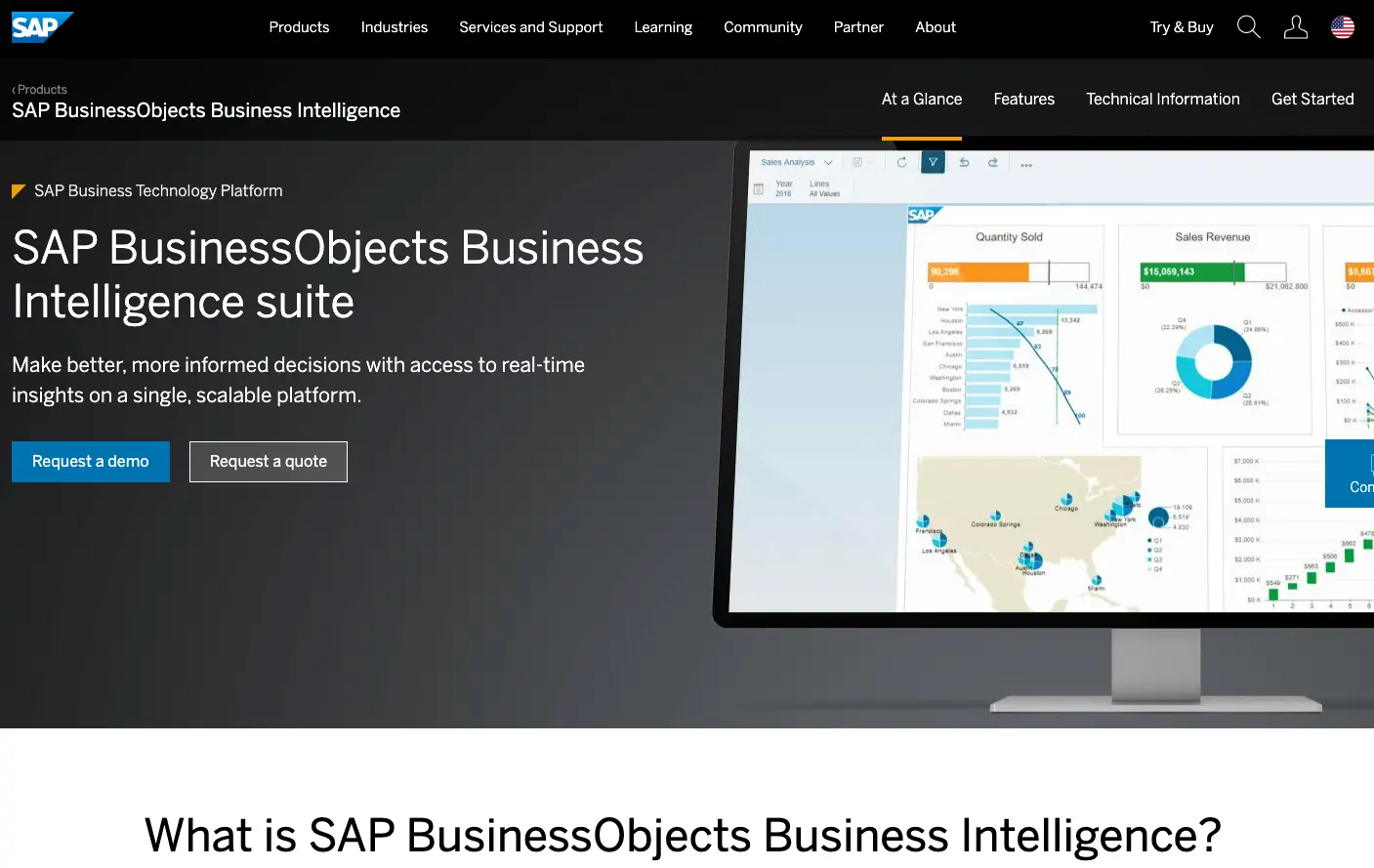E-Commerce Business Overview
Combine your Shopify, GA4, Google Ads, and Facebook data for insights across your business.
There are multiple tools to visualize, analyze, and keep track of your data, allowing you to get the insights you need to achieve your goals. But, with so many tools to choose from, how do you know which one is the right for you? Let's find out.

Data analysis is more important than ever. And, if you’re not a professional data analyst (and maybe even if you are), you need the right AI tools to analyze data.
There are multiple tools to visualize, analyze, and keep track of your data, allowing you to get the insights you need to achieve your goals. But, with so many tools to choose from, how do you know which one is the right for you?
What can AI tools do for you and your data exactly?
Let’s dive in.
With AI becoming more and more advanced every day, AI is becoming a more powerful, efficient, and approachable solution to process data.
Some of the modern ways of using AI in Analytics are:
What’s more, practically no other alternative can be used to solve all the issues AI does, or to analyze data in a more efficient and insightful way.
It's no secret that data analysis is laborious and time-consuming work.
With AI, much of the data analysis process can be expedited — even allowing for real-time insights to be derived from raw datasets.
AI algorithms can sift through massive amounts of data, identifying patterns, anomalies, and trends that might go unnoticed by human analysts.
Moreover, data analysis AI tools bring a level of consistency and accuracy that's hard to achieve manually. All this is made possible with AI-powered data analysis platforms like Polymer.
As AI technologies gain momentum, leading business intelligence and data analysis platforms ramp up their development of bleeding-edge automated features.
We already have AI tools that generate data visualizations using prompts, provide insight recommendations, automate data imports, and more.
Predictive analytics, sentiment analysis, and real-time data processing are just the tip of the iceberg.
In the near future, we can expect AI-driven tools to become even more sophisticated, offering capabilities like emotion detection, real-time anomaly detection, and even prescriptive analytics that can suggest actions based on the data analysis.
So, you already have access to your website’s analytics or the data of your marketing efforts.
What can AI do for you?
Here are the top four benefits of using AI for data analysis:
Here are some of the best AI tools to analyze data:
Polymer is an intuitive business Intelligence tool that empowers you to create stunning data visualizations, craft comprehensive dashboards, and embed your data into presentations like a pro — all without writing a single line of code.
Use Polymer’s advanced AI to analyze your data, suggest rich insights, and build beautiful dashboards in no time.
For starters, get an entire report done in seconds with an AI-generated board. This feature automatically scoops up relevant insights, picks the best visualizations for your datasets, and builds a ready-to-use dashboard for your convenience.

Polymer's most impressive AI feature, however, is PolyAI — a built-in conversational AI assistant that analyzes your data and instantly generates visualizations based on your instructions (or questions).

Still not convinced?
Here's a quick rundown of Polymer's other AI-enabled features for data analysis:
Of course, you're not required to use AI features to make the most out of Polymer.
With plenty of dashboard and spreadsheet templates to choose from, Polymer can help you analyze your data and improve your understanding of it all within a few clicks.
Embrace the power of Polymer and witness a transformation in your data handling. Sign up for a free 14-day trial at PolymerSearch.com and explore how easy and impactful data analysis can be!

Tableau is an analytics and data visualization platform that allows users to interact with the data they have without the need for coding.
The platform is easy to use, allowing users to create and modify dashboards and reports in real-time, and seamlessly share them across users and teams. It comes with all the features expected from tools like these, supporting databases of all sizes and offering multiple visualization options for users to analyze their data.
Tableau also allows users to run the platform both in the cloud or on-premise for users looking for a more hermetic environment for their data.

MonkeyLearn is another no-coding platform with AI data analysis features for users to visualize and rearrange their data.
The platform comes with multiple AI-powered text analysis tools to instantly analyze and visualize data to the user’s needs. Users can set up text classifiers and text extractors to automatically sort data according to the right topic or intent, and extract product features or user data.
The tool comes with multiple integrations to work with whichever tools are already being used, and a simple and intuitive UI matching the simplicity of the platform.

Microsoft Power BI is a famous business intelligence platform that also gives users the ability to sort through their data and visualize it to search for insight.
The platform allows users to import data from practically anywhere, and get started on creating reports and dashboards as they need. Users can also build machine learning models and access other AI-powered features to help them analyze their data.
The platform comes with multiple integrations, including a native Excel integration, and a UI faster and more responsive than some other solutions, although often at a higher price tag.

Sisense is another data analytics platform that allows both analysts and developers to sort through and visualize their data.
The platform is easy to use, with multiple drag-and-drop tools and a responsive UI made to streamline the experience. Sisense also allows users to access their “In-Chip” technology and choose between RAM and CPU to process the data, making computation faster when handling large datasets.
Although the platform has limited visualization capabilities, it’s a good option for users with basic visualization and reporting needs looking to handle smaller datasets.

Microsoft Excel was the best data analysis tool when it was created, and remains a competitive one today.
With Excel’s Data Analysis Toolpak, users can analyze and process their data, create multiple basic visualizations, and quickly filter through data with the help of search boxes and pivot tables. Excel also allows users to create machine learning models with no coding, use formulas to calculate data from clusters, and even create complex neural networks.
Although Excel’s capabilities have kept up with the times, it remains limited by its spreadsheet model and high learning curve, even without the need to code.

Akkio is a business analytics and forecasting tool for users to analyze their data and predict potential outcomes.
This no-coding platform comes with lead scoring features made for users to qualify and segment their lead lists and prioritize hot leads. The forecasting features allow users to use the data they have to get future predictions on practically any dataset.
The tool is fast and intuitive, and comes with few but useful integrations to get data to and from other tools.

QlikView is another business intelligence and data visualization solution that allows users to tap into AI technology to analyze their data.
The platform comes with multiple data exploration features and a versatile platform that’s friendly to both technical and non-technical users. Teams can seamlessly collaborate on the platform using simple drag-and-drop editors and workflows to manipulate their data to their liking.
Although the platform is highly functional, the high cost and comparatively low AI feature set make QlikView a better choice only for users who can use the full extent of the platform.

Part of the Google Cloud, Looker is another no-code data analysis and business intelligence tool with powerful capabilities and multiple integrations.
Looker is capable of processing large databases, allowing users to make multiple dashboards and reports, and condensing all their data sources into one. The platform is also capable of advanced data modeling features and comes with the benefit of being backed by Google.
Although the platform is easy to navigate, it doesn’t provide a lot of flexibility, and building reports from scratch can be time-consuming.

SAP BusinessObjects allows less-technical users to analyze, visualize, and report on their data, all while seamlessly integrating to the rest of the SAP suite.
With it, users can access AI and machine learning technology, and use them for data modeling and visualization, enhanced reporting, and dashboarding. The tool also allows users to access predictive forecasting features to gain deeper insight into their data.
However, although the platform has lowered its pricing, the cost of the solution, particularly when getting platform licenses, can still be prohibitive. That’s why this tool is better for users who are already SAP customers and can benefit from an AI data tool that works along with the other SAP tools they’re already using.

AnswerRocket is a data analytics platform that lets you take advantage of AI for a variety of tasks, like sales analysis, business performance reporting, ad hoc analysis, and forecasting.
One of its main selling points, Max, is an "AI Copilot" that can be instructed to perform data analysis, generate visualizations, and answer any questions related to your data.
Similar to PolyAI, Max generates detailed insights and visualization suggestions based on text-based prompts. You can also personalize Max, or create other AI Copilots, to modify their data analysis techniques and visualization algorithms — optimizing the frontend experience of your target users.

Finally, KNIME is an open-source, low-code analytics platform that supports over 300 data connectors.
It includes all the essential tools for blended databases, data transformation, data analysis, reporting, and more.
KNIME's AI-powered tools may not be as intuitive to new users as the others mentioned in this post. However, they enable experienced users to perform advanced tasks like building custom Large Language Models (LLMs) and generating workflows with K-AI.
On the flip side, KNIME is backed by a community of 100,000+ users — ready to offer assistance and technical advice to those who are new to the platform.
AI tools can help you analyze data deeper than ever before. You can use them to get the insights you’re looking for, find trends and patterns, and make better data-driven decisions. With AI being more affordable and accessible to users, it’s better to adopt it sooner rather than later.
Get started today by dropping your first spreadsheet into Polymer, and see how easy it is to analyze your data with the help of Polymer’s powerful AI.
See for yourself how fast and easy it is to uncover profitable insights hidden in your data. Get started today, free for 7 days.
Try Polymer For Free




